"Smart Growth" and "New Urbanism" Compared with "Large Lot Zoning" (Tom Lane) [ Home Page – Click Here]
(May 17, 2017) – Traditional "Large Lot Zoning" is "Greener" than "Smart Growth" within Urban Growth Boundaries . . . Copyright 2009 – 2017 . . . Tom Lane . . . Photographing California, Arizona, Nevada, New Mexico, Colorado, Utah, Oregon, and Seattle, Washington.
(June 26, 2011) Seattle Smart Growth, Puget Sound Regional Council – Do You Want 5 Acres, or 5 Feet?
Featured Image Above: 5 Acre Estate at an undisclosed exclusive neighborhood of very similar properties in Eastern King County, beyond the Urban Growth Boundary.
Do you want 5 acres, or a 5 foot fence surrounding your 5 foot wide tiny backyard in a smart growth townhome?
(June 26, 2011, Tom Lane) You get one or the other, with the agenda of the Puget Sound Regional Council and their Vision 2040 – Smart Growth Towers surrounded by an impenetrable urban growth boundary (UGB), shown in the map from King County, Washington State below. No exceptions for quarter acre lots outside the UGB, since lots are limited to 5 acre minimums.
The Washington State Legislature arrogantly trumped on your right to raise your children in a big backyard, when it decreed:
Intent — 2010 c 153: “It is the intent of the legislature to encourage high-density, compact, in-fill development and redevelopment within existing urban areas in order to further existing goals of chapter 36.70A RCW, the growth management act, to promote the use of public transit and encourage further investment in transit systems, and to contribute to the reduction of greenhouse gas emissions by:
(1) Encouraging local governments to adopt plans and regulations that authorize compact, high-density urban development as defined in section 2 of this act;
(2) providing for the funding and preparation of environmental impact statements that comprehensively examine the impacts of such development at the time that the plans and regulations are adopted; and
(3) encouraging development that is consistent with such plans and regulations by precluding appeals under chapter 43.21C RCW.” [2010 c 153 § 1.]
Source: http://apps.leg.wa.gov/rcw/default.aspx?cite=43.21C.420 –
5 Acres Only Allowed for the Very Rich!
We’re going backwards in terms of housing affordability and neighborhood design. In King County, compared to inside the urban growth boundary, lands outside the urban growth boundary are not in short supply. 5 Acre Mansions for the Rich are growing all over the eastern half of King County, while your family must live in an attached townhome on a5 foot wide backyard against a 5 foot fence in a smart growth townhome on a light rail line, or 6 lane boulevard. That’s similar to the 1800’s when people took the train and streetcar to work.
I favor affordable housing. Here’s a 5 acre mansion for The Rich near Renton, just outside of the urban growth boundary. Note: the gated Renton mansion is on 148th Ave. S.E., outside the urban growth boundary. Across the street, the tiny homes with no yards are within the urban growth boundary. And, the tiny homes get a sidewalk and bike lane (since they’re within the boundary), but the rich guy does not. Does this make sense?
Why not compromise the opposing positions, end this silly smart growth debate, and give both sides an acre for everyone, with sidewalks and bike laneson both sides?

Five acre estate outside the Urban Growth Boundary in Renton. See text above for significance of photo.

Inside the Aster Park development. Narrow streets, narrow setbacks, tiny yards, gravelscaping .... Why not eliminate the 5 Acre vs. 1/10th Acre pattern, and just give everyone an acre?
Here are more photos of 5 Acre Estate near Lake Desire, outside the UGB east of Renton –

A 5 acre "castle" next to Lake Desire, outside the urban growth boundary next to Renton, Wa.Its a series of "Lake Desire Castles" in various forms of development on very large lots outside of the UGB.

Its a series of "Lake Desire Castles" in various forms of development on very large lots outside of the UGB.

ONLY the VERY RICH can afford to build on highly desirable 5 Acre Properties around Lake Desire, Cedar Mountain, Otter Lake, and ALL of Eastern King County ... OUTSIDE the Urban Growth Boundary. NO exceptions.
Light Green and Dark Green Zoning on the Map Below
The United States Forest Service lands are in dark green below, and land that’s been allocated for 5 acre estates is in light green. Then, the red urban growth boundary separates light green 5 acre parcels, from much smaller lots, in the incorporated suburbs.
Of course, it’s ridiculous to designate nearly the same amount of land for 5 acre parcels (the light green area) as for incorporated cities with small lots (the white area).
Why not spread out into this light green area, and give every newcomer to Seattle an entire acre? What are they afraid of? Why do they want to crowd everyone into such a small area, causing heavy traffic and air pollution? It doesn’t make any sense to those of us who love nature and the outdoors. It certainly isn’t green, especially when they clearcut native trees to build smart growth towers and townhomes, as I show at this post: https://smartgrowthusa.wordpress.com/2010/08/12/timber-companies-destroy-trees-for-smart-growth/
Below, with a few exceptions (see legend), everything that is not white, is outside of the red urban growth boundary. This same urban growth boundary also encloses areas within three other counties as part of the Puget Sound Regional Council “Vision 2040” plan at this map: (http://psrc.org/assets/1776/V2040poster.pdf).
King County Zoning Map, downloaded from: http://www.kingcounty.gov/operations/GIS/Maps/VMC/Planning.aspx#DCC1A71A09194E73A35D915B4A3FE271
Click to enlarge this map on your screen. It will automatically enlarge from the WordPress server. For a PDF copy measuring 3′ by 4′ click on the link to King County.

King County, Wa. Zoning. From: http://www.kingcounty.gov/operations/GIS/Maps/VMC/Planning.aspx#DCC1A71A09194E73A35D915B4A3FE271
Before I Go Further, some Reassurance
Note that MOST cities in the US do not have “formal” urban growth boundaries as part of their growth management. Check out Vegas, Phoenix, Albuquerque, or for small towns, look at Santa Fe, Sedona, Durango, CO., and Ft. Collins, CO. Many cities across the U.S. have development surrounding them, and handle growth through annexation.
However, watch out in these places:
Flagstaff, Arizona, known for its high unemployment, metheads, and nickname of “Poverty with a View,” actually has three urban growth boundaries, and is the most expensive place to live in Arizona (even higher than Sedona!). Here’s a PDF link to their urban growth boundaries: http://www.flagstaff.az.gov/DocumentView.aspx?DID=231
Here’s a link to their comprehensive land use plan, describing the severe restrictions on development:
http://www.coconino.az.gov/commdevelopment/ComprehensivePlan/growth.asp
Most areas that I’ve seen only have one UGB. I have never seen one with two, and Flagstaff, is the first with three.
All towns in Oregon have very strict urban growth boundaries, pursuant to state law that can be interpreted. Unlike Washington State where cities are automatically assumed to voluntarily prepare growth plans meeting the criteria of the Growth Management Act, this is not the case in Oregon. Instead, the Director of Land Conservation and Development, along with his/her commission, must travel to each and every town, and essentially grill the city council and planners, to see if they’re in compliance.
Recently, Bend had an unfavorable confrontation with controversial ex-DLCD director Richard Whitman, along with LCDC commissioners John VanLandingham and Greg McPherson: https://smartgrowthusa.wordpress.com/2010/11/06/nov-2-2010-richard-whitman-john-vanlandingham-lcdc-responsible-for-kitzhaber-victory-they-waited-until-election-day-to-deny-bend-urban-growth-boundary-expansion/.
This is despite extensive homework from both the City of Bend, and the Central Oregon Association of Realtors, whose political affairs director William Robie even advocated for affordable housing: https://smartgrowthusa.files.wordpress.com/2011/03/billrobietocityofbend.pdf
Where are these 5 acre mansions?
The four county urban growth boundary adjudicated by the Puget Sound Regional Council (PSRC) separates rural lands from developed areas with tiny lots; here’s the map of land use in King County. Light green lands are zoned for 5 acre estates – minimum – no exceptions.
Here’s a 23 acre lot for sale in Hobart beyond the urban growth boudary, and 24 acres for sale outside the UGB for only $369,000 near the Cedar River Landfill, north of Maple Valley, and South of Issaquah. It’s a very nice area, with roads and trails nearby leading to the Issaquah Alps (Cougar, Squak, and Tiger Mountains). And, there’s mountain biking at Taylor Mountain, and fishing in the Cedar River.
However, these 24 acres can only be subdivided into 5 acre lots – nothing less. Compare that to standard quarter acre lots (i.e. a standard density of 4dU/acre). Given the high livability in this area, and its close proximity to Renton (10 minutes), Bellevue (20 minutes), and Seattle (35 minutes), there’s no reason to not open these lands to development.
Whoeever buys these 5 acre properties will undoubtedly build expensive mansions for only the very rich, such as the photo at the top of this post which is on the same street. As a result, young families who want private yards will have no choice but to commute very long distances, from $200,000 homes in Bonney Lake and Lakeland Hills in Eastern Pierce County, or from Mount Vernon well north of Everett, in Kitsap Co.
Note: When this is outside the urban growth boundary and zoned with 5 acre minimums, clearly the text stating: “Plenty of buildable sites on each lot” is incorrect. The photo is the street where this property is for sale, along with another 5 acre mansion similar to the one at the top of the post.
And, here’s a “Proposed Land Use Action” sign in unincorporated King County about a mile from the new Kohls store and Applebys in Maple Valley, on a side street off of Petrovisky Road:

Zoned "RA5" for 5 acre lots. No more. That's it. Despite the commute, millions would love to live here on quarter acre lots, just a mile outside of Maple Valley, a great neighborhood near the Cedar River, Green River, and Cascade Mountains. Between Maple Valley and Issaquah (including Mirrormont and May Valley) are my favorite "rural" residential areas in the County.
Here are 5 acre estates in a pure alder forest near these Maple Valley properties, in mid-February with no leaves. Of course, only a true Northwesterner can appreciate the simplicity a pure Alder Forest. And, they should be preserved during construction, never clearcut like the pro-smart growth folks have done at other developments on this web site.
What Would Developers Prefer? What’s Best for the Homebuyer?
Of course, as an environmentalist who favors native trees, wildlife, and organic gardens, I’m not opposed to Large Lot Zoning and would love to own 5 acres. However, 5 acre minimums right next to high density smart growth townhomes – separated by a boundary – is ridiculous.
If developers had their way, they would build on the smallest lot possible to maximize both amenities, and the sale price of the home. In a neighborhood with young families, with no restrictions on lot sizes and no impact fees, they would build an assortment of home sizes on varying lot sizes, from a quarter acre to an acre or more, with homes ranging from 1500 to 5000 square feet. This would maximize their profts, and also give all of us the most choices – in terms of the cost and size of our homes and their amenities. Lot sizes would average about a quarter acre, which was the maximum acheived in the 20th century afterWWII (ref: Robert Bruegmann).
King County, the State of Oregon, and Smart Growth proponents like to see lot sizes much less than a quarter acre, as shown in many photos on this web site. However, this web site is about good urban design and personal choice. Families prefer large lots for their kids, so if market forces played an exclusive role in King County housing policies, lot sizes would range from quarter acre to several acres in the outlining areas.
On the UGB – Ron Sim’s “4 to 1” Smart Growth Program

New homes in the Parks smart growth development on the urban growth boundary in Renton. Compare the tiny lot sizes to the 5 acre lots outside the UGB, on the sign pictured above.
A mile away from the King County 5 acre lot sign above, you’ll find this sign for a new development of lots of less than a quarter acre in the “Parks” development in Renton, near Lake Youngs. The “Parks” development is part of a series of high density neighborhoods – Woodside, McGarvey, etc. – on the urban growth boundary with tiny yards. Lot sizes are generally a quarter acre or less.
These neighborhoods are part of Ron Sims’ “4 to 1” Smart Growth Program (click here), where there are 4 acres of open space for each 1 acre of development. The trail system through lakes and forests on the urban growth boundary (map below) is actually very nice. It’s similar to the conservation subdivision concept which I advocate. However, most advocates of conservation subdivisions would not agree with the very high densities, and the lack of native trees on each property. Indeed, Port Blakely Communities, a Timber company, developed both Woodside and the Issaquah Highlands developments.

The Woodside development features very small lots against parks and trails in the urban growth boundary.Woodside ridiculously high density cookie cutter homes against parks and open space. This is looking north to the well known power line easement (with trails) that runs east to west down to Renton.

Woodside ridiculously high density cookie cutter homes against parks and open space. This is looking north to the well known power line easement (with trails) that runs east to west down to Renton.

CLCK TO ENLARGE AND READ - Port Blakely's Sign of Woodside and nearby trails in the Lake Desire / Cedar Mountain area on the urban growth boundary.

CLCK TO ENLARGE AND READ TEXT. King County's map of the Lake Desire / Cedar Mountain area on the urban growth boundary.
Outside the UGB – Exceptions to the 5 Acre Rule
FORTUNATELY, for a variety of reasons, some subdivisions in unincorporated King County have lots smaller than 5 acres. Perhaps these lots were subdivided before the growth management act in the early 1990’s? Nice examples include the Mirrormont area, a census designated place of about 4000 persons (show photos), along the SW slope of Tiger Mountain, southeast of Issaquah. (show photos)
And, here’s a yuppie bedroom community with one acre lots called Shadow Ridge, east of Renton and north of Covington. This view is looking towards Mirrormont, which is located at the base of Tiger Mountain:

Shadow Ridge development, east of Renton and north of Maple Valley. Looking NE towards Tiger Mountain (with the Mirrormont neighborhood at its base).

This mansion for sale in Shadow Ridge, for approx. $800,000. Since land is in such short supply, then with urban growth boundaries, prices do not necessarily decrease outside the boundary! This is just 2 miles east of the UGB east of the Fairwood neighborhood in Renton.

Trampoline and Western Hemlock trees in the backyard of a house in the yuppie bedroom community of Shadow Ridge, east of Renton, and north of Maple Valley.
Below, two 5 acre estates east of Renton feature two things you’ll never find in Smart Growth developments: 1) fended vegetable gardens, and 2) 3 car garages for expensive cars:
Here’s a nice mansion in unincorp – add Mirrormont homes – Add later
Here’s your Five Feet – Smart Growth Homes and Townhomes are Aesthetically Ugly with 5 foot fences, and 5 foot setbacks
Look at these skinny three story homes with no yards at “Creekside” in Kent, Wa. I’ve shown many other posts with towering condos with no yards, and sometimes, no decks.
Urban Growth Boundaries Make Housing Unaffordable
Numerous studies demonstrate that urban growth boundaries increase land costs, by creating a scarcity of developable land for quarter acre lots. See the sidebar for “Professors …….”
Here are two views from Sammamish past the UGB, and into the valley with the Redmond-Fall City Road (SR-202), from Cascade Ridge Elementary. Above the road on the hillside and beyond, there’s plenty of land for development to the northeast, until one eventually hits the Snoqualmie Valley and the distant Cascade Mountains.

Looking NE over the Urban Growth Boundary from the edge of Sammamish, towards the Cascade Mountains.
The second photo looks towards Mt. Si at sunset, towards Fall City. Again, in just a few hundred yards past these Sammamish homes, there’s plenty of land for development:

Looking SE from Sammamish towards Mt. Si at sunset - the Urban Growth Boundary is just a few hundred yards away.
Here’s SR-202, the Redmond-Fall City Road, intersecting Sahalee Way going downhill from Snohomish. Since it’s outside the UGB, landowners are unable to get rich and sell their land to developers:
No Relief from High Prices in the Suburbs
Generally, without urban growth boundaries, home prices gradually decrease as you move out from the City center. However, this does not happen when the UGB rations land. For example, the homes in Sammamish, at the edge of the boundary, are going for $500,000+. Here’s a Seattle Times article on Sammamish, Click Here for article – http://seattletimes.nwsource.com/html/realestate/2013971513_realneighborhood23.html
High property taxes help pay for fancy amenities such as the library, City hall, very nice parks, etc. Sammamish is indeed the most expensive and coveted suburb in all of King County. All suburbs could look this nice, if not for the urban growth boundary.

Sammamish City Hall. Behind me (not shown), you can see the skyline of downtown Seattle, 20 miles away.
Since homes with yards are in high demand for families with children, Seattle residents commute dozens of miles from counties outside of the PSRC Regional Urban Growth Boundary. Recently, radio commercials have been running for “Get a Great Life in Mt. Vernon dot com,” where homes start in the upper $100,000‘s, and where shopping amenities including outlet stores are quite plentiful. Check out the great life in Mt. Vernon web site (turn your volume down, first, due to a promotional video): (Safari refuses to add, FIX)
(add web site)
Regional emigration to jobs within the PSRC boundary also occurs from Olympia (Thurston County), Shelton (Mason County), Centralia and Chehalis (Lewis County), and even Ellensburg and Cle Elum, both east of the Cascades (Kittitas County).
These long commutes waste foreign oil and contribute to greenhouse gases. Therefore, given national security and oil impoarts, why don’t we cancel the urban growth boundary just 5 miles east of the City limits of Renton, Kent, and Auburn?
Smart Growth 20 Miles Out Is VERY EXPENSIVE!
This is a big shock to proponents of Smart Growth. While smart growth is billed to be “green, low cost, and family friendly,” nothing could be further from the truth!
Just read this add in The Seattle Times from Pulte Homes, and the flyer I picked up from the Redmond Ridge HOA. CLICK THE IMAGE and then enlarge with your browser to see the cost of attached townhomes in Issaquah Highlands, Redmond Ridge, and Snoqualmie Ridge:

This add from Pulte for expensive Smart Growth Townhomes with long commutes appears every week in The Seattle Times (Spring, 2011).

Redmond Ridge smart growth flyer with expensive smart growth townhomes and homes, received from their HOA community
Urban Growth Boundaries Devalue Land
Let’s say that you own a 34 acre farm outside the UGB. Since King County only allows you to develop 5 acre lots, then you’re stuck with 6 lots, just like the 4 lots from 24 acres in the property for sale above. Here’s a 34 acre farm with 6 outbuildings near Maple Valley going for $640,000:
Let’s say the PSRC was dissolved with a citizen initiative, as most residents of rural King, Pierce, Snohomish, and Kitsap counties want. In this case, the land would be at least 100 quarter acre lots (since we have to account for streets and parks).
Since this land is just 15 minutes from Bellevue, and 20 minutes from Seattle, it’s quite valuable. Therefore, with high demand from Boeing and Microsoft employees, you could get at least $100,000 for each quarter acre.
That’s $10,000,000 – TEN MILLION ! The farmer becomes a millionaire, overnight, by canceling the PSRC restrictions.
And, no more wasted foreign oil commuting to and from Mt. Vernon.
And, you ask if I care about farmland preservation? Absolutely. However, for most of eastern King County beyond the urban growth boundary, lands designated as rural consist of unused, unkempt pasture and young alder trees. The horse properties are a mess. The older generations have passed away, and the kids (now living in the suburbs with their kids), essentially abandon their parents’ estates, which turn into meth labs from transients.
In contrast, farmland in the Snoqualmie Valley will always be preserved, since there’s a demand for the Valley’s wonderful dairy products, wine, cheese, fruits, and vegetables.
Here’s a Christmas Tree Yard – OUTSIDE the Urban Growth Boundary – Worth Nothing Across I-90 from Snoqualmie Ridge Smart Growth
Here’s another example like the farm above. This 6 acre Christmas Tree yard is outside the urban growth boundary, about one mile south of the Snoqualmie Ridge Smart Growth development, across I-90 (my photos are here).
It’s a bargain if you want acreage on the edge of the Seattle metro, for just $234,000, right next to Rattlesnake and Tiger Mountains, Mount Si, and just below Snoqualmie Pass. If I was buying property in Seattle, I’d buy it for a country estate:

6 Acre Christmas Tree Yard For Sale for $234,000, outside the Urban Growth Boundary, one mile south of the Snoqualmie Ridge development.
However, what is its true value, if it was INSIDE the Puget Sound Regional Council’s (PSRC) Urban Growth Boundary (UGB)? I would guess that the adjacent Snoqualmie Ridge development, with its skinny homes and townhomes, has a density of 15 dU/acre, with expensive impact fees. With townhomes starting in the low $300’s (see their ad above), then perhaps it’s 50 grand for 1/15th of an acre.
Therefore, if this guy had got lucky and his land across the freeway had been included in the PSRC boundary, then that’s $50,000 per unit, times 15 per acre = $750,000 per acre.
With 6 acres, that’s $750,000 per acre X 6 acres = $4.5 MILLION DOLLARS !
That’s either $234,000 outside the UGB, or, $4.5 MILLION inside the UGB !
Wow, he really was screwed by King County and the PSRC, with his land just one mile outside the boundary.
Now, of course, as an architectural enthusiast, I despise high density developments. But you get my point. The guy was SCREWED by King County and the PSRC, and those inside the boundary make huge profits, due to land rationing with the boundary, and windfall profits.
WHERE is the OUTRAGE from the public, to protect Middle Class Christmas Tree Yard Owners?
You know that he would be angry if he knew all this economic stuff. WHERE is the outrage from the public to protect Middle Class Landowners?
The late Dr. Bernard Frieden of MIT describes anti-growth forces at work in his classic 1970’s book “The Environmental Protection Hustle.” He says (EMPHASIS added, page 119):
“(W)hy should environmentalists oppose new housing? Adverse environmental impacts, such as water pollution, are exceptional and can usually be controlled WITHOUT blocking ENTIRE developments. There is almost NO connection between housing, and the big environmental issues of our time (i.e.) – toxic substances, nuclear radiation hazards, (and the) conservation of natural resources.
The attack on homebuilding DOES NOT FOLLOW from the central concerns of the environmental movement. Instead, it represents a stretching of the environmental agenda, to issues THAT ARE MARGINAL. Under these circumstances, the attack on homebuilding is able to inflict damage on HOUSING COMSUMERS, without making any important improvement in the QUALITY of the public environment.”
DO YOU AGREE with Bernard Frieden?
I completely agree. We do have incredibly serious environmental issues, such as air and water pollution, nuclear contamination in Japan and at Chernobyll, radioactive mine tailings in the otherwise pristine Durango, Colorado, and preservation of native plants. However, the growth regulations clearly are regressive, when they make it too expensive for the middle class to buy a $300,000+ townhome INSIDE an urban growth boundary. They are ALSO regressive when they DEVALUE land, such as the working farm, and the Christmas Tree yard above.
Furthermore, our modern “smart growth” developments are unattractive and offer no private yards. Therefore, the majority of homebuyers will purchase homes outside the boundary, where there are less regulations and cheaper homes with private yards. This contributes to increased air pollution, and dependence on foreign oil, due to longer commutes.
Therefore, “smart growth” is clearly bad for the environment, and bad for your pocketbook. Robert Bruegmann points out that lot sizes reached a maximum in the 1950’s after WWII, at a quarter acre, and have been declining rapidly since then.
In the 1950’s and 1960’s, Home ownership was also achievable by the blue collar working class. Today, some of these now retired members of the “Greatest Generation” have moved on to retirement communities in the sunbelt. They have left us a legacy of beautiful homes on large lots, with gorgeous gardens and mature trees. Their neighborhoods are the very best in any city, such as much of Bellevue, Kirkland, and the eastside in the Seattle area.
Look at this very nice street with mid-Century homes, and large very nice mature Colorado Blue Spruce trees, about 60 years old! I think this is in Newcastle or Renton, and I’ve posted additional photos of this exceptional neighborhood at the bottom of this post.
5 Acre Minimum Lot Zoning Increases Sprawl Outside the Boundary
The pro-smart growth Seattle organization, The Sightline Institute, publishes excellent maps of sprawl in the Pacific NW. Since lot sizes are 5 acre minimums outside the Seattle area urban growth boundary (UGB), then people buy 5 acre lots all over unincorporated King, Snohomish, Pierce, and Kitsap Counties. As you can see from their map, one dot outside the brown urban growth area represents 10 properties. From 1991-2001, they write that 46,000 new properties were developed outside the UGB. Of course, not all of these are on 5 acre lots, given that many smaller lots were delineated before growth management was in place. For example, the Mirrormont neighborhood near Issaquah has many open lots that are less than 5 acres. And, note that Sightline’s map does not show new properties in Kitsap County (the western county).
Therefore, urban growth boundaries do not stop urban sprawl outside the four county UGB administered by the Puget Sound Regional Council. Map from: http://www.sightline.org/maps/maps/sprawl_seaper_cs04m

Date range: 1991-2001 Despite recent successes in growth management, Seattle-area jurisdictions authorized 46,000 residences outside the urban growth boundary from 1991 through 2001. Publication date: 2004 | Originally published in: Cascadia Scorecard 2004 | Topic(s): Sprawl & Transportation | Graphic type: Map From: http://www.sightline.org/maps/maps/sprawl_seaper_cs04m Note: Does not include data for Kitsap County (west of Puget Sound). (I have received permission by way of e-mail from Sighline to use this map on my blog.)
Dr. Robert Bruegmann, Professor of Architecture and Art History and author of “Sprawl: A Compact History” has this to say about large lot zoning (from page 190):
“Another reform effort was to mandate large-lot requirements in rural areas. The logic was that by forbidding the subdivision of rural areas into parcels smaller than, say, 5 or 10 acres, these measures would discourage subdivision, and what development did occur would be at such low densities that it would not jeopardize the rural ambience. Like many of the measures aimed at curbing sprawl, this one eventually was judged to be counterproductive. As families became more affluent and farmland prices dropped, many more families were willing and able to buy large tracts of land and erect large suburban homes. This pushed what was essentially urban development even further out and at even lower densities than would have occurred without these regulations.”
Planned Unit Developments Miles from Downtown
In addition, the Puget Sound Regional Council allows planned unit developments miles from downtown areas. These unsightly, high density, “smart growth,” cookie-cutter developments, such as Redmond Ridge, Issaquah Highlands, Talus, and Snoqualmie Ridge (such as the newspaper ad from Pulte Homes above), are in the middle of nowhere, with long commutes, wasting gasoline. Since we will run out of oil, why not place these developments next to the existing urban boundary? I show photos of Issaquah Highlands here: https://smartgrowthusa.wordpress.com/2010/06/25/ron-sims-video/
I show photos of Snoqualmie Ridge here: https://smartgrowthusa.wordpress.com/2011/01/05/jan-4-2011-seattle-smart-growth-mountains-to-sound-greenway-i-90-photos-of-smart-growth-developments/
Dr. Bruegmann on Planned Unit (“Smart Growth”) Developments:
Dr. Bruegmann discusses the history of these PUD’s (pages 189-190 from his book):
“Anti-sprawl reformers … lobbied for zoning concepts that they believed would reduce sprawl. One popular technique of the 1960s and 1970s was the creation of more flexible codes that would allow “cluster development.” Instead of the usual arrangement of similar-sized lots, a number of units could be clustered together, not only saving money on infrastructure and other costs, but also leaving the remaining land as permanent open space. On a somewhat larger scale, there was a push to supplement or supplant traditional zoning with planned unit developments (PUDs), which were essentially special zoning provisions negotiated between the developer and the local government.”
Bruegmann discusses the smart growth advocate’s rationale for PUDs:
“[Under this arrangement, the developers] would be more likely to create high-density, mixed use development on one part of the site, allowing for open space elsewhere. These techniques, which produce on a smaller scale patterns akin to entire communities in many north European regions, became quite popular, but neither clustering nor the use of PUDs necessarily had any effect on overall urban patterns, since overall densities remained low.”
Finally, Bruegmann makes this very important point:
“Most of the new developments using these techniques, like the suburbs of many European cities, could be seen as sprawl, just configured slightly differently.”
I agree. It’s a different type of sprawl. There is nothing “green” about it, especially since all the trees have been clearcut, to accommodate such high density townhomes and towers. What we see at Talus and Issaquah Highlands is just high density sprawl. And, with Google sattelite views, it looks like sprawl. In this post, I show google views of various smart growth, vs. non-smart growth, communities: https://smartgrowthusa.wordpress.com/2010/12/05/ugly-views-of-smart-growth-on-google-earth/
You-Tube: Dr. Robert Bruegmann
Presented in 2008 at Case Western Reserve University, in Cleveland, Ohio, discussing his new book “Sprawl: A Compact History.”
Urban Growth Boundaries Do Not Create Open Space
Open space and parks in the Seattle or Denver area is found in the regional parks, inside the urban growth boundary. It’s not relegated beyond the respective urban growth boundaries in both areas. Instead, what you find outside the urban growth boundary are 5 acre estates, that are privately owned, and do not have trails.
In fact, due to much lower population density, parks beyond the UGB are used by less people than those within the UGB.
Landscape architects, birdwatchers, and other advocates for urban parks such as the Mountains to Sound Greenway, are appalled at the current de-emphasis on conserving land in our suburbs.
Below, here are 26 (?) new homes in Newcastle on a nice south facing hillside with sunshine and views. This would have made a gorgeous and very popular park. Certainly, Newcastle residents are very affluent, and could raise their sales tax to buy properties such as this one:
And, here’s a dead end street in Federal Way’s “Copper Leaf” development. Beyond this are large native trees, that extend around the entire master planned development. What a perfect opportunity for the City or the HOA (Home Owners Association) to buy the land, and build a one or two mile jogging trail around “Copper Leaf.” Indeed, a common misperception is that there’s no land left within mostly developed urban areas. There’s plenty of land – developers often hold out to the last minute, to make a killing (known as “land banking,” or speculation). Land is an investment, that rises and falls in price, just like any commodity, such as stocks.

There's plenty of vacant land within developed suburbia for development. Why not turn this land into interurban trails, and not worry about preserving land outside the urban growth boundary?
We need open space in the cities, in addition to outside the UGB. It is very difficult to walk or bike in many areas within metro Seattle, due to a lack of open space and trails. This, of course, is true for most major US cities. It’s an inevitable consequence of sprwal. However, instead of blocking even more sprwal, why not establish more interurban trails and bike lanes in congested urban areas? That is probably the only principle of smart growth that we all agree on.
Many organizations concentrate their conservation efforts in the Cascade foothills. For example, the Mountains to Sound Greenway, which is a bi-partisan private philanthropic effort, is building a growing network of trails connecting Seattle to Ellensburg.
However, what’s unique about the MTSG is that it starts directly in the backyards of the premier examples of Suburban Sprawl: Newcastle, Bellevue, Renton, Issaquah, Sammamish, Snoqualmie, and North Bend.
Organizations such as the MTSG, and the International Mountain Biking Association, provide open space and trails at the urban – rural interface. Since this web site serves as a template for good urban design, and is neither a schill for the construction industry or the smart growth lobby, that’s why you see links to my favorite recreational organizations in the sidebar. Check them out, and see the good work they are doing to bring us all closer to nature. But what we really need, more than anything else, are more interurban trails and local parks in high density neighborhoods like Federal Way.
Urban Growth Boundaries Make Bicycling Dangerous
Unfortunately, once you get outside of an incorporated area within the UGB, there are inadequate shoulders for bikes. I could show numerous photos of this. For example, here’s a dangerous curving road along the Cedar River in Renton, near the Cedar River Montessori School. I mean, this is ridiculous – a school with no sidewalks or bike lanes? That’s how ridiculous the PSRC policies are:

No bike lanes or sidewalks along a dangerous curving road next to the Cedar River Montessori School.
Clearly, the PSRC needs to revise its policy to widen shoulders on all rural roads in the unincorporated areas of King County.
Land Speculators (?) in the Seattle Times, Spring 2011
This add appeared in The Seattle Times in April, 2011. While I am not going to “speculate” about whether or not this company is a “land speculator,” basic economics tells us the following. When land prices have fallen as far as they have in Seattle (following the housing bubble), companies with extra money will try to buy land, hoping (“speculating”) that it will increase in value (similar to the stock market).
For our housing supply to follow booms and busts secondary to growth controls and urban growth boundaries is an outrage, given that life is short and that all families deserve affordable housing with private yards.
So Where Do We GROW from Here?
Certainly, government programs that encourage building large estates on 5 and 10 acre lots on unproductive farmland is not the way to grow, unless, of course, you choose to do this with your own 5 acre lot. I would cancel the Seattle area urban growth boundary, and re-zone all rural areas to smaller lots. Given that most people want to live close to where they work, I believe that this would result in a concentration of homes near the existing UGB. On the other hand, parks and open space are highly valued by families, and all new developments in rural areas should include hiking and mountain bike trails, similar to Bend, Oregon, Mammoth Lakes, California, or Flagstaff, Arizona.
Competing ideologies to “smart growth” include the concept of a Destination Resort, such as Sunriver near Bend, Oregon. Another is the concept of a “conservation subdivision,” from Landscape Architect Randall Arendt. Both destinations resorts and conservation subdivisions preserve and value native vegetation and wildlife, unlike high density smart growth developments such as Issaquah Highlands and Snoqualmie Ridge.
I plan to study master planned Destinations Resorts in Washington and Oregon very carefully in 2011, and I’ll report back with photos. Apparently, they’re opposed by the same folks who favor high density smart growth, so there’s a rivalry. Conservation subdivisions are back east, and I have never heard of one in the West, perhaps because of restrictions mandating small lot sizes and urban growth boundaries?
More later. Editing in progress.

Similar to the other King County map above. CLICK TO ENLARGE and read zoning delineations. Downloadable at the same link.
Once Again. The Neighborhoods that the Greatest Generation left us – before the “Smart Growthster Baby Boomer Bureaucrats” (SGBS) came along.
Here are two more photos of mature Spruce and other evergreen tree specimens in a neighborhood in either Newcastle or Renton, Wa. These homes were originally purchased after WWII by the Greatest Generation. Now, they have been sold to baby boomers, and ultimately, to Generations X and Y. Gens X and Y are generally neoliberal on economics issues, and therefore reject taxes and land use regulations, preferring private yards for their children, even if it means they have to drive to Seattle from Mt. Vernon or Olympia.

Gorgeous Colorado Blue Spruce and other evergreens in a mid-century neighborhood in either Newcastle or Renton, Wa.

Same caption as above, although note that the bluish tree is a fake Colorado Blue Spruce. It's the Blue Atlas Cedar, related to the Cedar of Lebanon in the Bible. This is a great neighborhood.

The Baby Boomers, and ultimately Gens X and Y are buying these homes, formerly owned by The Greatest Generation.
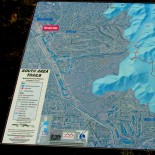

















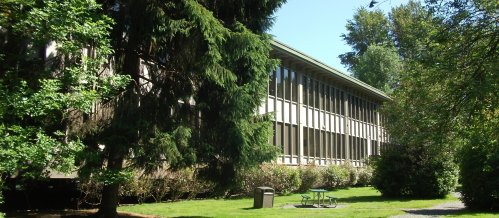
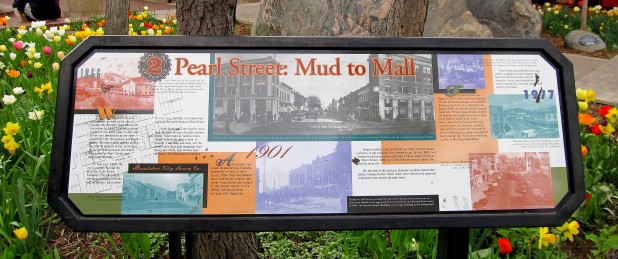

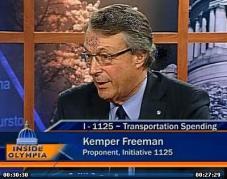
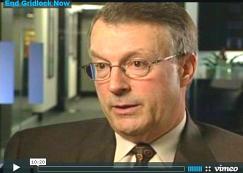
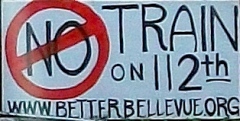

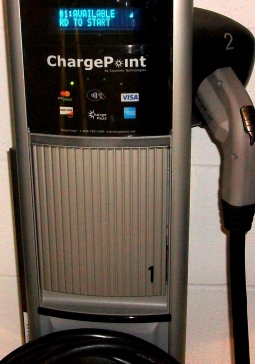


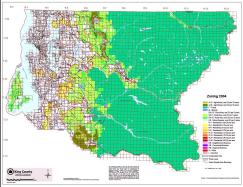
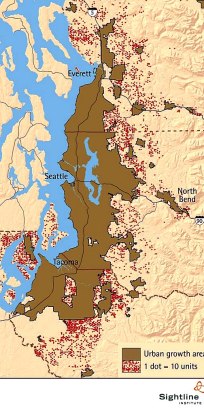
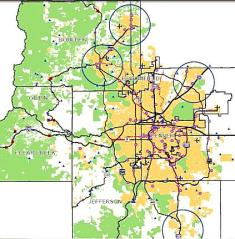
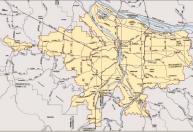
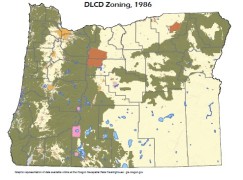
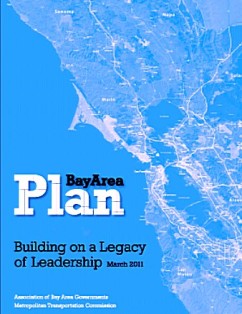

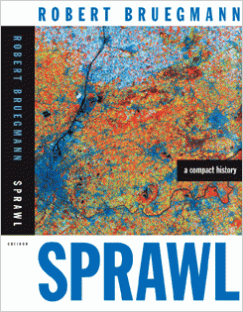
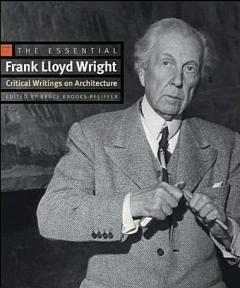
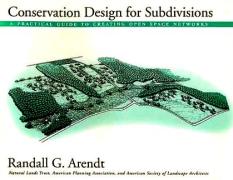
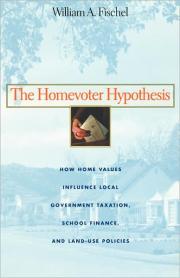
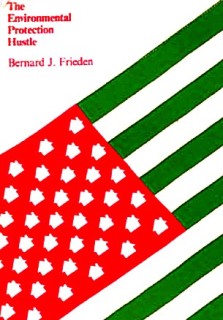
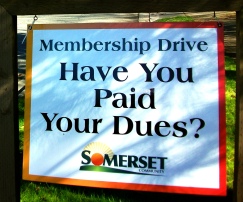
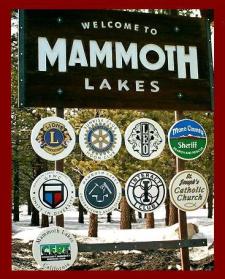
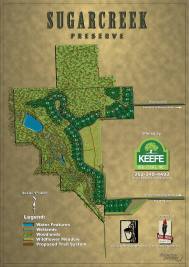

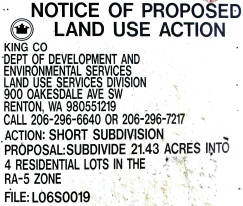
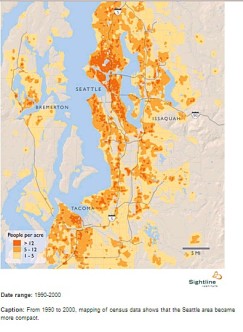
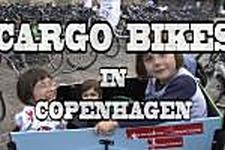
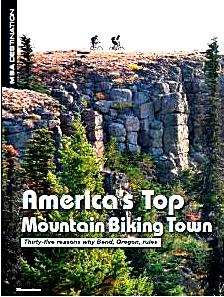
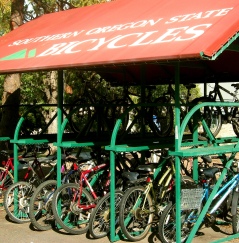

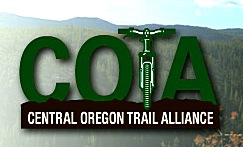

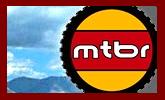




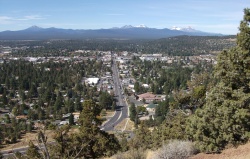
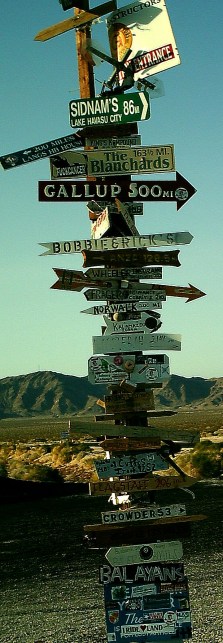
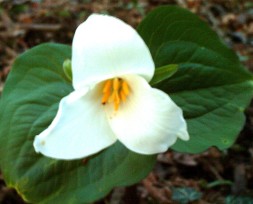


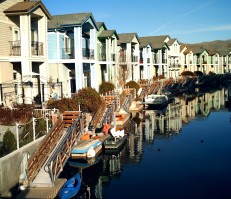


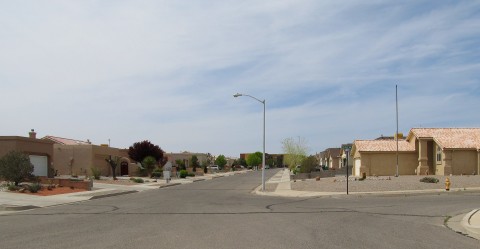
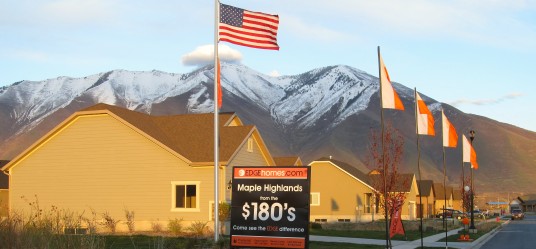
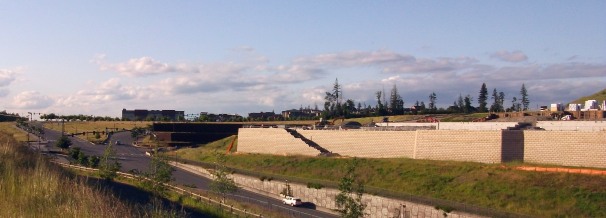


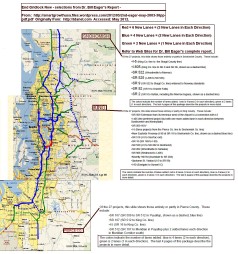
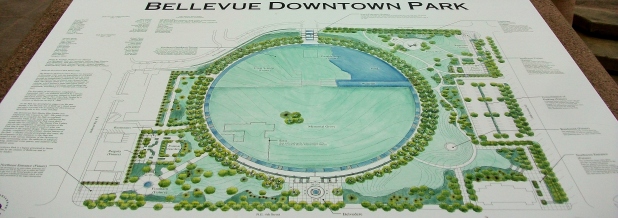


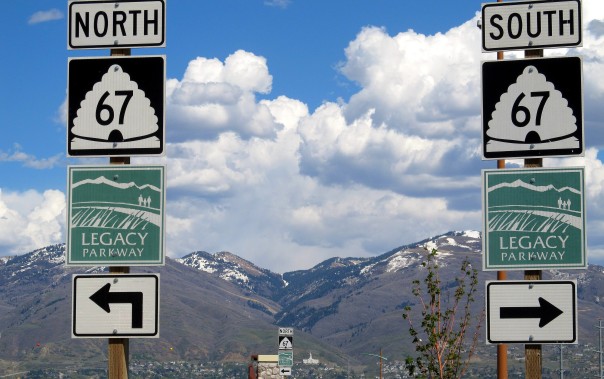
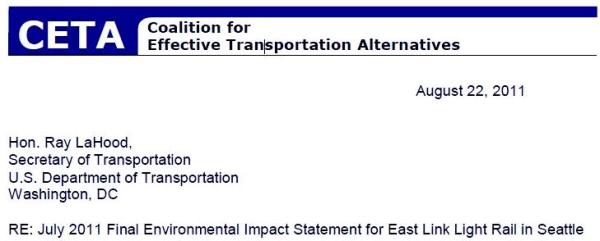
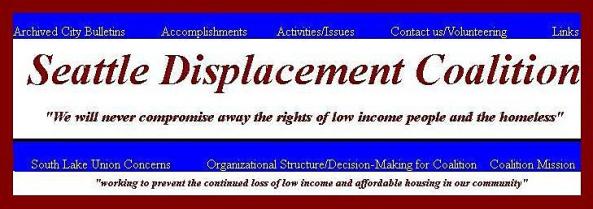
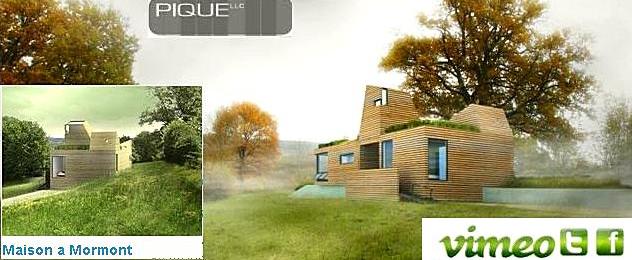
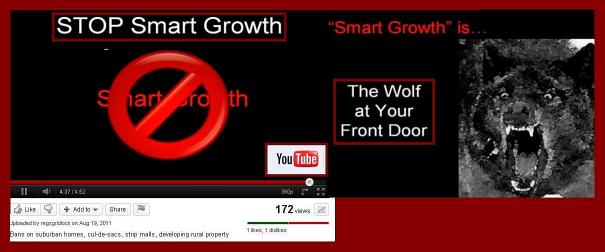

I have a background in policy and administration, and have studied the GMA [Wasington State Growth Management Act] for quite some time. Although I used to think the GMA was a good idea, the evidence that you and others have shown simply is not resulting in a desirable outcome.
Oddly enough, from what I can tell, it probably makes things worse in terms of commuting and congestion related issues, let alone quality of of life. You mention a number times the idea that in most urban areas people tend to reach a certain equilibrium around a quarter of an acre or so in the first ring of suburbanization, and maybe 1 or 2 acres in the outer most areas. From what I can tell, this is a rather realistic assessment, that balances density with quality of life and economic considerations.
I am just guessing but I would assume eventually this situation will be what does in the GMA, since how it as present has created, as you have noted rather odd and unfeasible situations.
On a side note, I live in the Moscow-Pullman area in Eastern Washington [and Idaho]. Both Moscow and Pullman are very heavily zoned in a fashion similar to King County (high density lots and strict [urban growth] boundaries). From what I can tell, the net effect has been to make both towns very expensive to live in, average house price is around $250,000, even though Whitman and Latah counties don’t have a [total] population of more than 60,000 people.
The other thing I have noticed is a similar spill-over effect, where people will commute up to 30 or 40 miles to live in one of the small more affordable towns. Or, they will buy larges tracts of land outside of the towns, and build 5,000 square foot homes. It is rather classist and extremely wasteful.
What you describe in Pullmann, WA. and Moscow, ID. is similar among many smaller to medium sized markets with urban growth boundaries and/or strict zoning in the Intermountain West.
For example, Bend, Oregon has an UGB and higher cost of living resulting in higher housing costs. Due to the shortage of affordable housing with private yards, commuters travel 20+ miles from smaller and less expensive towns of Redmond, Terreborne, Sisters, Prineville, and LaPine.
This “market failure” induced by the State of Oregon increases air pollution, i.e. in this case, the State of Oregon’s urban growth boundaries, and their high density housing requirements, result in insufficient housing with private backyards for children that families prefer.
Thanks for your comments. I deleted your last name pursuant to the privacy policy. I added a few corrections in ” [ brackets ] ” – for example, to clarify to readers that you were referring to “urban growth boundaries.”